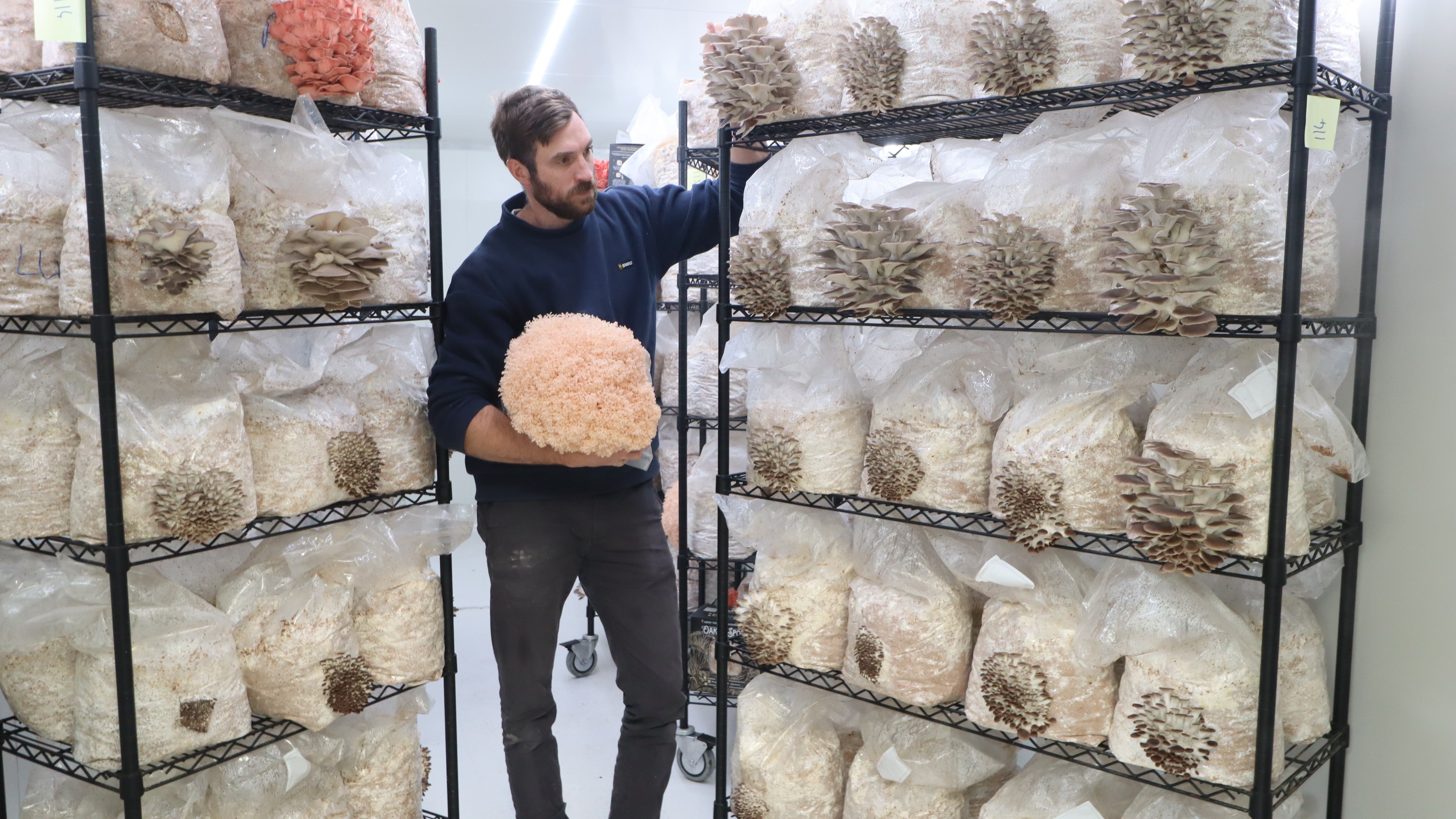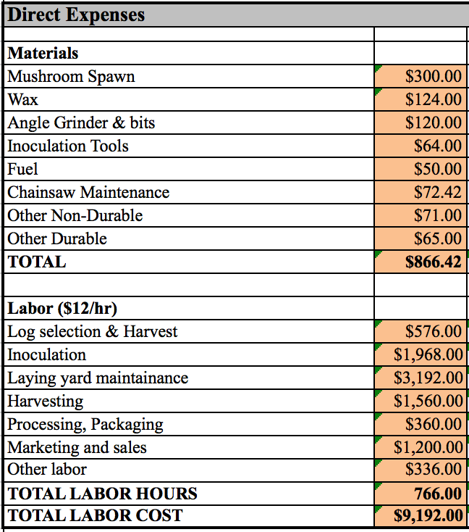Imagine turning your passion for mushrooms into a thriving business. Yes, you can cultivate a profitable venture right from your backyard or a small indoor space.
Mushroom farming is not just a trend; it’s an opportunity waiting for you to explore. With the right setup and understanding of the costs involved, you can dive into a market that is both lucrative and rewarding. Are you curious about how you can start your own mushroom farm and tap into a growing market?
This blog post will guide you through the essential steps of setting up your mushroom farming business, unravel the costs you need to consider, and unveil the potential market waiting for your produce. Get ready to discover the secrets to a successful mushroom farming venture that could transform your financial landscape. Keep reading, and let’s unlock the doors to your profitable future together.

Choosing The Right Mushroom Varieties
Selecting the best mushroom varieties boosts profits in farming. Consider costs, climate, and market demand. Oyster and shiitake mushrooms often provide good returns.
Choosing the right mushroom varieties is a crucial step in setting up a profitable mushroom farm. The choice you make can significantly impact your costs, setup, and market appeal. With numerous varieties available, selecting the best ones might seem daunting. But with a little guidance, you can make informed decisions that will benefit your business.Understanding Market Demand
Knowing what mushrooms are popular among consumers is essential. Visit local markets or grocery stores to observe what’s in demand. Talk to chefs and restaurant owners about their preferences. This insight will help you choose varieties that are likely to sell well.Climate Compatibility
Consider your local climate when selecting mushroom types. Some mushrooms thrive in cooler temperatures, while others need warmth. Oyster mushrooms, for example, adapt well to a range of climates and are often a safe bet. Make sure your choice matches your environmental conditions for optimal growth.Ease Of Cultivation
Some mushrooms are easier to grow than others. If you are new to mushroom farming, start with varieties that require less expertise. Shiitake mushrooms have a straightforward cultivation process and are suitable for beginners. You can gradually expand to more complex varieties as you gain experience.Profit Potential
Evaluate the profitability of different mushrooms. Some varieties, like truffles, are highly lucrative but demand specialized growing techniques. Weigh the cost of cultivation against potential profits. This analysis will guide you in choosing the right mushrooms for your farm.Personal Experience And Preferences
Think about your preferences and experiences with mushrooms. Maybe you have a personal fondness for button mushrooms or found success with them in past endeavors. Your enthusiasm can translate into better care and attention during cultivation, boosting your chances of success. Choosing mushroom varieties is both an art and a science. What is the best approach for your farm? Would you prioritize market demand or ease of cultivation? Consider these factors carefully to make choices that align with your goals.Optimizing Farm Setup
Optimizing your mushroom farm setup can boost efficiency and profitability. With the right setup, you can improve yield and reduce costs. Understanding space, equipment, and environmental control is key.
Space Planning
Efficient space use is crucial in mushroom farming. Organize your farm to maximize growing areas. Use vertical racks to utilize height. This increases production without expanding your footprint.
Essential Equipment
Invest in basic tools to improve efficiency. A good ventilation system controls humidity and temperature. Sterilization equipment prevents contamination. Choose reliable tools to ensure smooth operations.
Environmental Control
Control temperature and humidity for optimal mushroom growth. Install climate control systems. They help maintain the ideal environment. Consistent conditions lead to healthy and abundant crops.
Efficient Watering System
Mushrooms need precise moisture levels. Automated watering systems save time and reduce water waste. Drip systems provide consistent moisture. They ensure mushrooms get the right amount of water.
Lighting Considerations
While mushrooms need little light, some varieties require it for growth. Use low-energy LED lights to mimic natural conditions. This encourages healthy mushroom development.
Energy Use Optimization
Reduce energy costs with efficient systems. Solar panels can provide sustainable energy. Insulate your growing areas to maintain temperature with less energy use.
Waste Management
Proper waste management enhances farm hygiene. Compost organic waste for soil enrichment. This reduces waste and supports sustainable practices.
Effective Cultivation Techniques
Mushroom farming offers a profitable venture for both beginners and seasoned farmers. Utilizing effective cultivation techniques can significantly enhance yield and quality. Understanding these techniques can make the difference between a thriving farm and a struggling one.
Choosing The Right Mushroom Variety
Different mushroom varieties require specific conditions. Oyster, shiitake, and button mushrooms are popular choices. Each has unique needs in terms of temperature and humidity. Researching the best variety for your region is crucial. This ensures optimal growth and market demand.
Preparing The Substrate
The substrate is the base for mushroom growth. It can be made from straw, sawdust, or coffee grounds. Sterilization is vital to remove harmful organisms. This helps provide a clean environment for mushrooms to thrive. Proper preparation of the substrate is key to a successful harvest.
Maintaining Ideal Growing Conditions
Mushrooms require specific temperature and humidity levels. Most varieties thrive in 55-60°F with high humidity. Controlling the environment is essential. Use humidifiers, fans, or heaters as needed. This ensures consistent growth and quality produce.
Ensuring Proper Ventilation
Ventilation is crucial in mushroom farming. It helps remove excess carbon dioxide. This promotes healthy mushroom growth. Ensure your growing area has proper airflow. This can be achieved through windows or fans.
Regular Monitoring And Pest Management
Regular checks help identify and solve issues early. Watch for pests like flies or mites. Use organic solutions for pest control. Regular monitoring prevents infestations and ensures healthy crops.

Marketing And Sales Strategies
Discover profitable mushroom farming by understanding setup costs and market strategies. Learn to balance expenses with smart sales techniques. Maximize your profit potential with efficient planning.
Marketing and selling your mushrooms effectively can make a significant difference in the profitability of your mushroom farming venture. It’s not just about growing high-quality mushrooms; it’s about getting them into the hands of eager customers. Understanding your market and employing smart strategies can help you tap into this lucrative opportunity.Understanding Your Target Market
Identifying who will buy your mushrooms is crucial. Are you targeting local restaurants, health-conscious consumers, or high-end supermarkets? Different audiences require different approaches. Consider visiting local farmers’ markets to understand customer preferences. This can provide insights into your ideal buyer and how best to reach them.Building Strong Relationships With Buyers
Creating relationships with your buyers can lead to repeat business. Reach out to local chefs and restaurateurs to show them the quality of your mushrooms. Offer to supply them with samples. Personal connections can be a deciding factor when they choose a supplier.Utilizing Social Media For Promotion
Social media platforms are powerful tools for reaching a broad audience. Share visually appealing images of your mushrooms and behind-the-scenes glimpses of your farm. Use platforms like Instagram and Facebook to interact with potential customers. Engaging content can help build a loyal following and boost sales.Participating In Farmers’ Markets And Local Events
Farmers’ markets offer a direct sales channel and a way to engage with your community. Set up an attractive stall with samples and informative displays about your mushrooms. Engage with customers to educate them about the benefits and uses of your produce. This direct interaction can increase brand awareness and drive sales.Offering Subscription Boxes
Consider introducing subscription boxes for regular customers. This provides a steady income stream and ensures your mushrooms reach your customers fresh. It’s a convenient option for those who enjoy consistent, high-quality produce. Plus, it can help build a dedicated customer base.Exploring Online Marketplaces
Online marketplaces can expand your reach beyond your local area. Set up an online store through platforms like Etsy or local food delivery services. Highlight the unique aspects of your mushrooms, such as organic or specialty varieties. This can attract customers who value quality and convenience.Engaging In Collaborative Marketing
Partner with other local businesses for cross-promotion. For example, collaborate with a local bakery or cheese shop to create unique product offerings. This not only broadens your customer base but also strengthens community ties. Collaborations can open new sales avenues and enhance your brand’s visibility. Have you considered what makes your mushroom farm stand out from the rest? By implementing these strategies, you can effectively market your mushrooms and increase your farm’s profitability. Whether you’re a seasoned grower or just starting, these tips can guide your sales strategy and help you achieve success.
Conclusion
Starting mushroom farming can be a rewarding venture. The initial setup costs are manageable. With the right planning, profits can grow steadily. Understanding market demands is essential. Focus on quality and sustainability for success. Research local markets to find your niche.
Networking with other farmers helps share insights. Keep learning and adapting to changes. Patience and dedication will guide your journey. Happy farming!

